Drifting through Lyon
Wandering on foot, metro, tram and funicular to soak up the city – and buy a bottle opener.
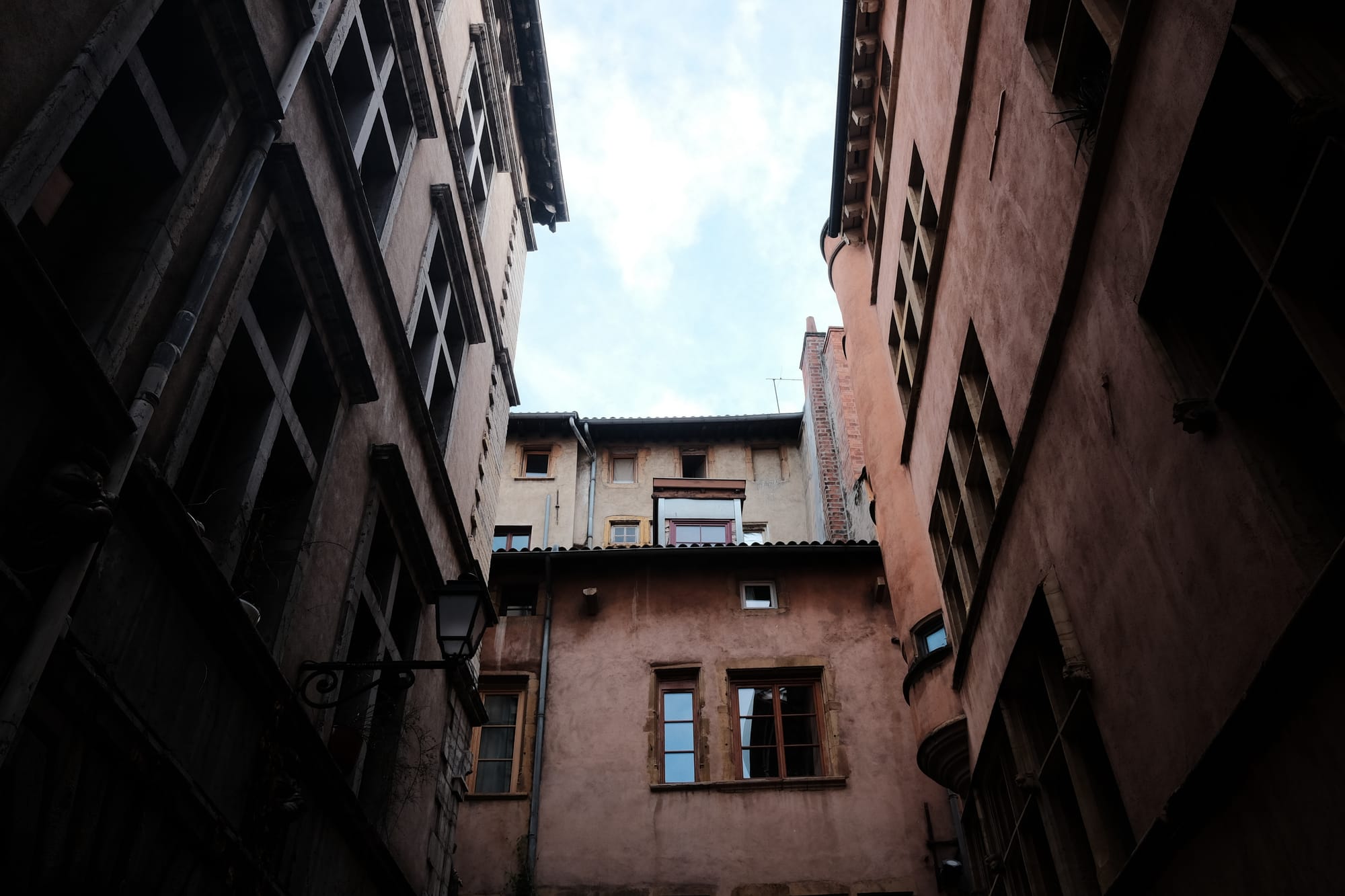
The writer and filmmaker Iain Sinclair, who chronicles London’s hidden histories, advocates exploring on foot. Drifting purposefully is his preferred mode, ‘trampling asphalted earth in alert reverie’ to reveal forgotten or marginalised aspects of the urban landscape.
On a family holiday, we prefer a mix of walking and public transport – the tram or metro extends our range, but we still move at a slower rhythm than the city. There’s time for it to soak into our consciousness. That’s how we hoped to spend the day drifting through France’s third-largest city.
But opening the shutters on our hotel room window, we found Lyon dampened by persistent rain. The weather forecast predicted it would relent by lunchtime. That was too long to wait. We had sat on the TGV from Lille for four hours the previous day and our legs were keen to get moving, so we donned our waterproofs and set out.
A stroll over the bridge took us to the old town. We were keen to use one of Lyon’s funiculars, which trundle up and down much as they have for over a hundred years. We wanted F2, as it’s known – the line to Fourvière. That would take us to the vantage point of Notre-Dame de Fourvière. From there, we could see the city laid out before us.
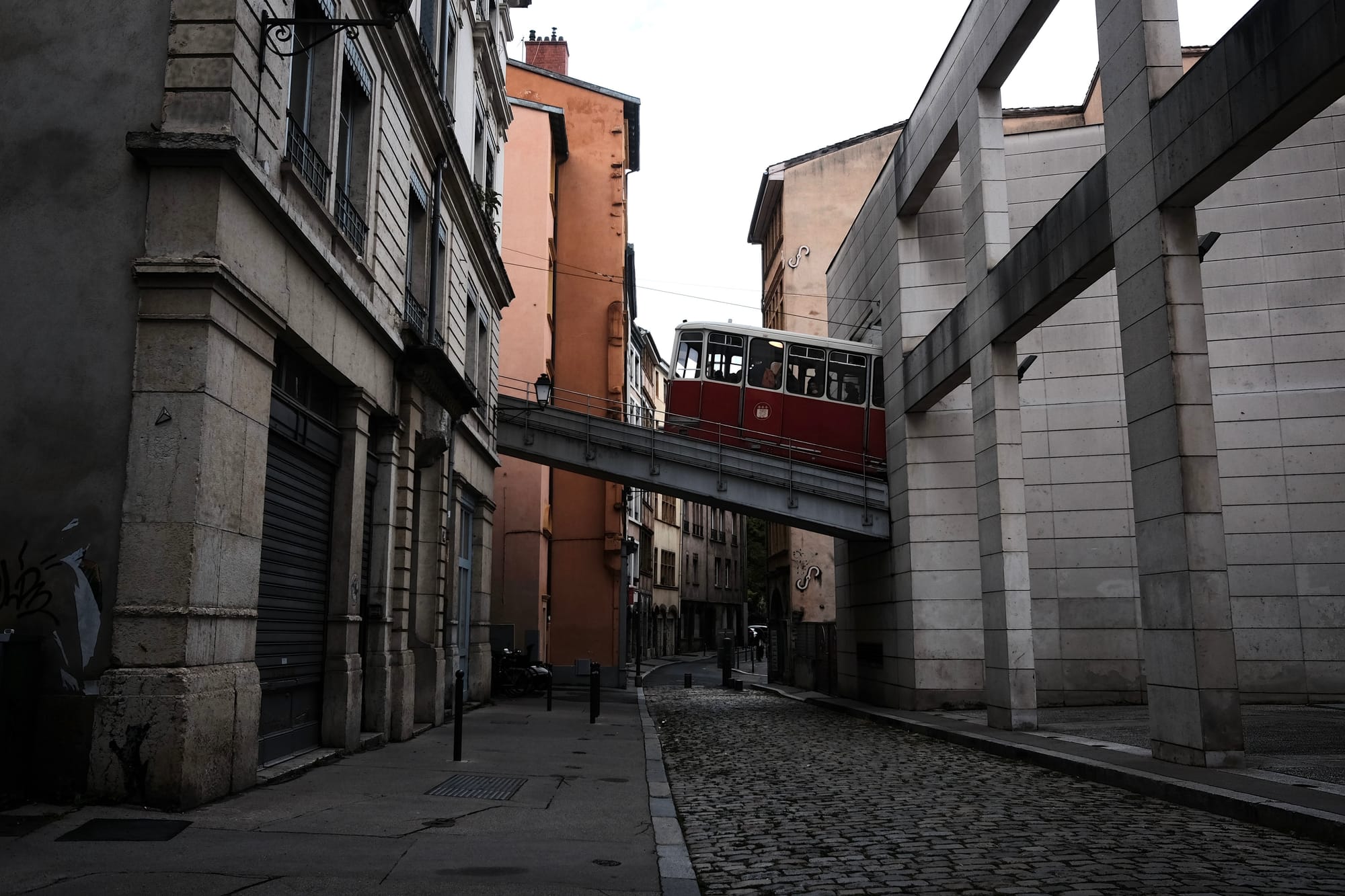
It was a short trip. The cables seemed to take no more than a minute or two to haul the little carriage up its hillside tunnel. Inside, a few tourists mixed with locals – both avoiding the climb up the hill. We emerged from the station into quickening rain. It was pouring now. Adjusting the hoods on our jackets, we headed to the viewpoint hoping the cloud was high enough to see across the city.
It was. And there was quite a view. Below us, the orange-tiled roofs of the old town huddled together along narrow streets between the hillside and the river. Beyond them lay the brash towers of the business district. Each had its own power-dressing style. Polished black. Brutal concrete. Ground-to-sky glass. They stood awkwardly together like unfamiliar colleagues at a work function.
Behind the towers, through the clouds, we could see a plane taking off from the airport. According to our phone app, it was bound for Marseille. But wasn’t Marseille just a couple of hours away from Lyon by train? We thought the French government had banned flights where a high-speed rail alternative exists. Later, we discovered that the largely symbolic ban doesn’t cover this route.
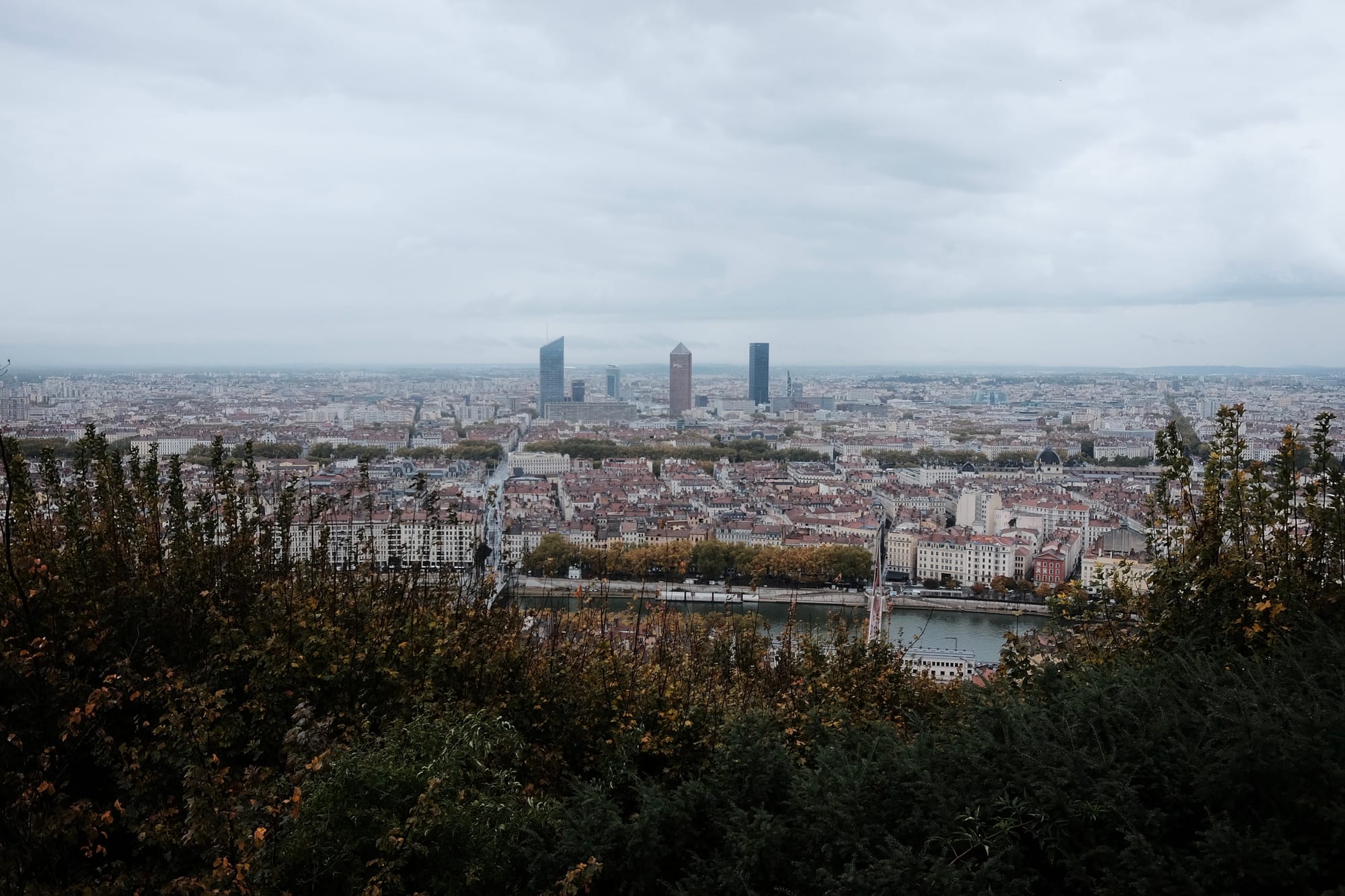
The continued boom in aviation is bad news for the climate. Oil companies are happy, though – companies like Total Energies, whose Feyzin Refinery we could see on the skyline to the south. I opened Google Maps and noticed that someone had used the reviews to vent their frustration at the plant and its emissions.
"I have a Crit Air 3 car," they wrote, referring to a category of older, more polluting vehicles in the city’s low-emission zone, "and I am no longer allowed to drive in Lyon, while others do not have pollution criteria to respect…"
How can it be fair that individuals are asked to change their behaviour, while multinational companies continue to pollute on an industrial scale? By taking the train to Lyon we had cut our carbon emissions by around 97% compared to flying. Meanwhile, the Feyzin Refinery, just outside Lyon’s low-emission zone, processes over 100,000 barrels of oil per day.
The rain still hadn’t relented, so we sought shelter in the Notre-Dame de Fourvière’s gift shop. I hoped it might provide one essential piece of equipment I’d forgotten to bring on our trip. And I soon spotted what I was looking for, in a pot behind the religious medals: bottle openers.
I picked one out of the display. It was emblazoned with the word ‘Lyon’ in red and blue letters, and featured the city’s coat of arms. The gaudy design made it the perfect souvenir, one that said: "Whenever you open a bottle, remember where you bought this ugly thing.” (It now sits on my desk, just in case I should feel the need for a beer while I work.)
Leaving the shop, we walked through Fourvière’s amphitheatre. The Romans built it for 10,000 spectators, but today, aside from us, the only visitors were a group of boisterous Dutch schoolchildren. Leaving them acting out impromptu skits on the stage, we continued on foot to the old town. Then, via the metro and tram, a leap to the city’s newest quarter, the Confluence.
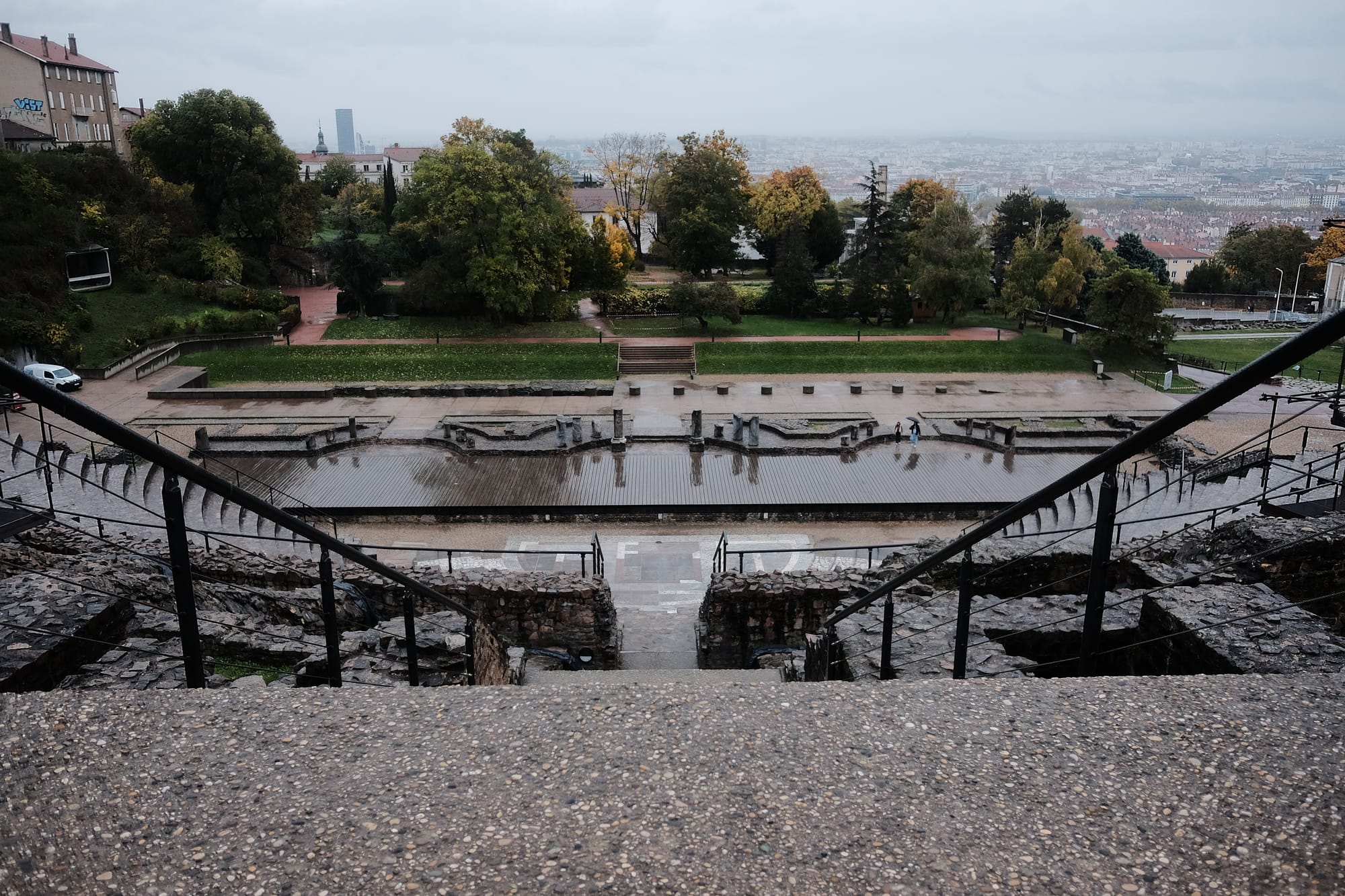
At the heart of this former industrial area is the Musée des Confluences, a shining, angular building – shaped like a hybrid between a crystal and a cloud. Inside, we explored an exhibition curated in partnership with indigenous Amazonian communities.
The displays charted the history of the tribes’ cultures and the ways they are shaping a sustainable future for themselves and the forest. If only we, as a society, put as much thought into living as the Mebêngôkre (Kayapo), Ashaninka, Wayana and Apalaï tribes do.
Through the museum’s glass walls, we could see that the rain had cleared. It seemed a shame to spend any longer indoors. We emerged blinking into a sunny afternoon and made for the river. There, the waterbus timetable showed a service due shortly. That would be the perfect way to drift back towards our hotel.
As we sat on the boat, I photographed the buildings along the riverbanks. I have mixed feelings about photography in an age where social media has reduced places to filtered pastiches of reality. Cultural theorist Walther Benjamin wrote that ‘even the most perfect reproduction of a work of art is lacking in one element: its presence in time and space, its unique existence’.
Can out-of-context pixels on a screen ever hope to convey any depth of meaning? I take photos primarily for myself. I find it mindful, helping me focus not just on looking but on really seeing. And when I look back through my photos, I don’t just see – I feel the place where I made the image.
Lyon should be used to being viewed through the gaze of a camera lens by now. The city was home to the Lumière brothers, whose first film, Workers Leaving the Lumière Factory was shot and screened here in 1895. Each year the city hosts the Festival Lumière, a film festival dedicated to films of the past. The 2025 edition had wrapped up just before we arrived.
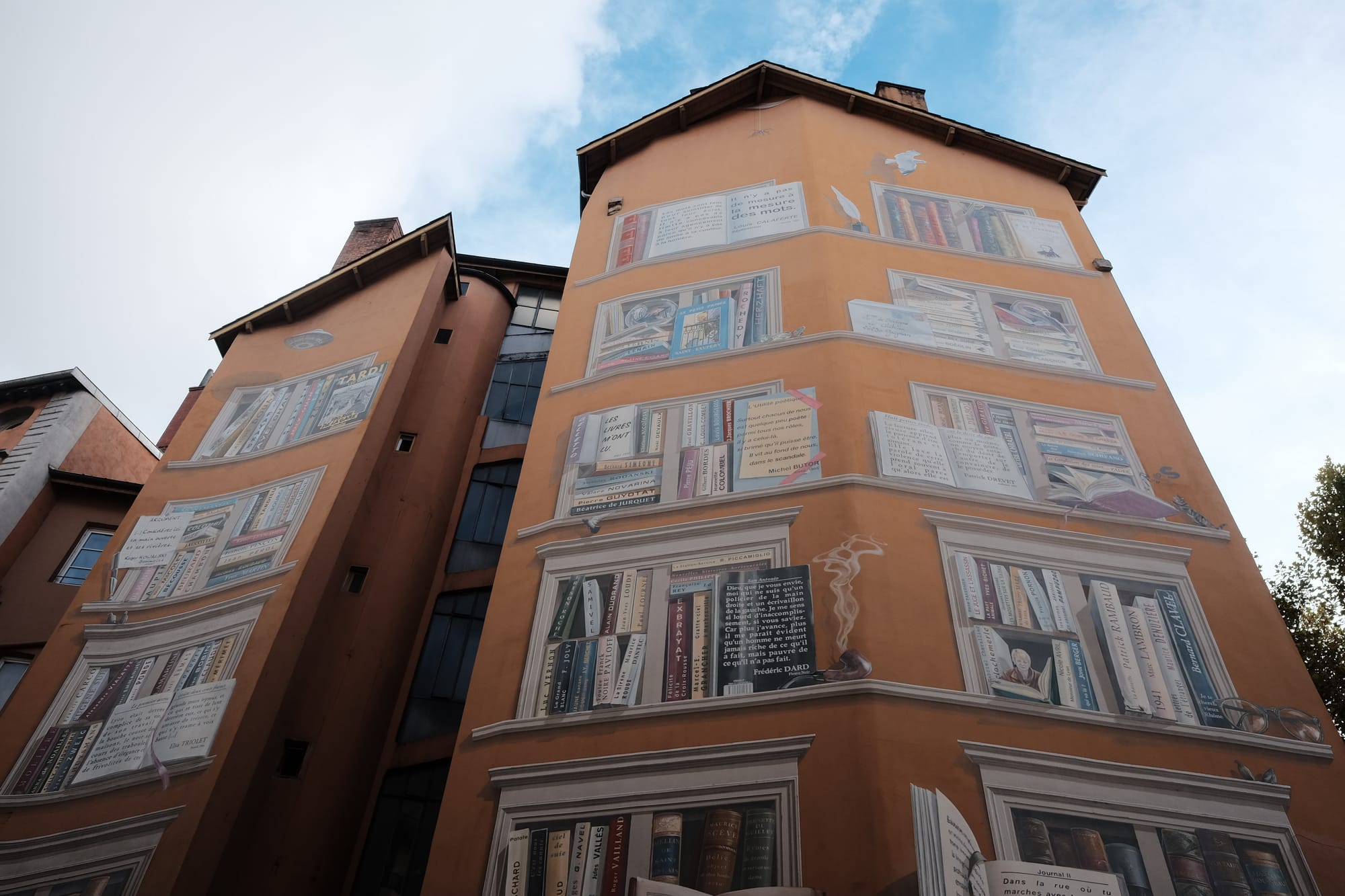
Cinema is not the only art form for which Lyon is famous. After disembarking from the water bus, we wandered back to the hotel via some of the giant trompe l’œil murals that adorn buildings across the city. They’re the work of a cooperative, CitéCréation, that was born in the 1980s from students’ desire to take art out of the hands of the elite School of Fine Arts and bring it directly to the people of Lyon.
There’s something wonderfully playful about strolling past a trompe l’œil bookshop celebrating the work of local authors. Elsewhere, the Lumière brothers appear at an upstairs window. Silk weavers go about their trade in the neighbourhood that they made famous. There are now more than 150 murals, and each celebrates a different area of the city.
As for my bottle opener, it’s no work of art. But it did help me open a beer back at the hotel to thank Lyon for revealing a little of itself to us.
